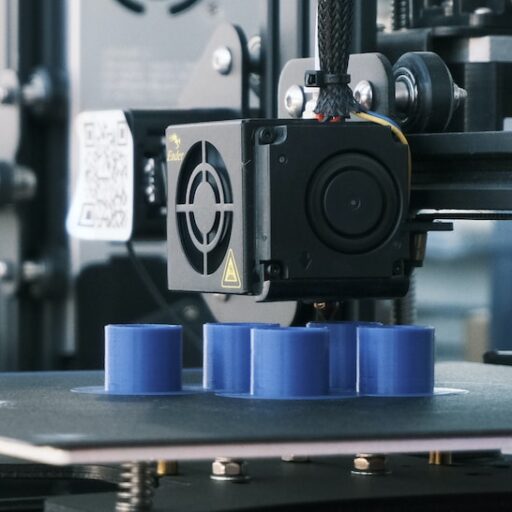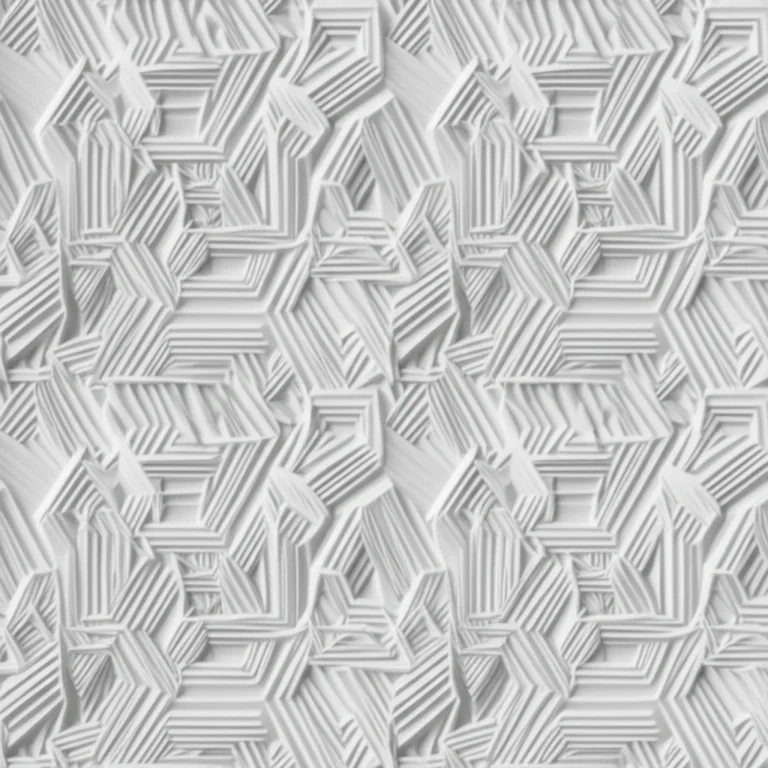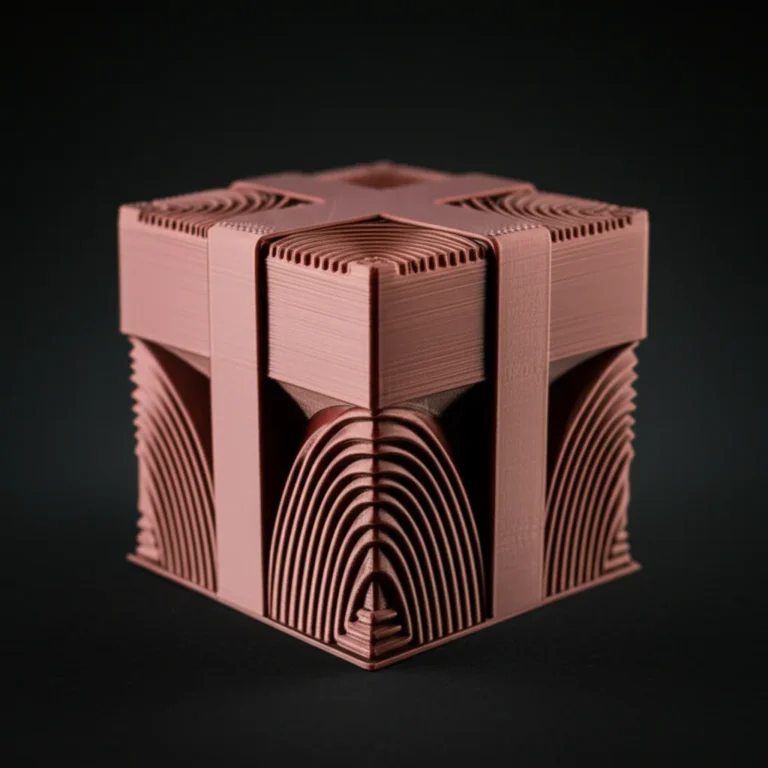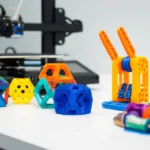Support our educational content for free when you purchase through links on our site. Learn more
Can I 3D Print Functional Tools & Machinery? Your Ultimate 2025 Guide 🛠️
Ever wondered if that 3D printer sitting on your desk could actually churn out a wrench tough enough to tighten your car’s lug nuts? Or maybe a custom gear that fits perfectly into your vintage lathe? Spoiler alert: yes, you can—but it’s not as simple as hitting “print.” From choosing the right printer and material to mastering design tricks that turn fragile plastic into industrial-grade parts, this guide dives deep into everything you need to know about 3D printing functional products like tools and machinery in 2025.
Here’s a little teaser: did you know that aerospace giants like Airbus and SpaceX now rely on 3D printed parts that endure extreme heat and mechanical stress? And that you can get surprisingly close to that level of performance right from your home workshop with the right setup? Stick around as we unpack the best printers, materials, design hacks, and real-world applications that will have you printing parts that don’t just look cool—they work hard.
Key Takeaways
- 3D printing functional tools and machinery is absolutely possible with the right combination of printer technology, materials, and design strategies.
- Material choice is critical: engineering-grade plastics like Nylon 12, carbon-fiber composites, and even metals can deliver industrial-strength parts.
- Printer technology matters: FDM is great for entry-level functional parts, SLS nylon offers near-isotropic strength, and metal printing unlocks heavy-duty applications.
- Design smart: orientation, wall thickness, infill, and stress-relief features can make or break your part’s durability.
- Post-processing enhances performance: annealing, vapor smoothing, and heat treatment can significantly improve strength and finish.
- Not every tool is a candidate: high-voltage insulators, ultra-precision parts, and FDA food-contact items often require traditional manufacturing.
Ready to turn your 3D printer into a powerhouse of functional manufacturing? Let’s dive in!
Table of Contents
- ⚡️ Quick Tips and Facts: 3D Printing Functional Products
- 🛠️ From Prototypes to Powerhouses: A Brief History of Functional Additive Manufacturing
- 🚀 Unlocking the Power of Additive Manufacturing: Your Guide to 3D Printing Functional Parts
- 🧠 The Mechanics Behind the Magic: How 3D Printers Build Your Tools and Machinery
- ⚙️ Choosing Your Weapon: A Deep Dive into 3D Printing Technologies for Functional Applications
- 🎯 Picking Your Perfect Printer: Matching Technology to Your Functional Needs
- ✅ Why Bother? The Game-Changing Advantages of 3D Printing Functional Products
- 🌍 Beyond Trinkets: Real-World Applications of 3D Printed Tools and Machinery
- 💪 The Backbone of Functionality: Engineering-Grade Materials for 3D Printed Tools
- 🔬 Material Matters: Choosing the Best Filament or Resin for Your Functional Print
- 📐 Designing for Durability: Tips for Creating Robust 3D Printed Tools and Machinery Components
- ✨ Beyond the Build Plate: Enhancing Your Functional Prints with Post-Processing
- ❌ The Not-So-Pretty Side: What 3D Printing Can’t (Yet) Do for Every Tool
- 💰 The Investment: What to Expect When Buying a 3D Printer for Functional Parts
- 💡 Conclusion: The Future is Functional – Our Final Thoughts on 3D Printed Tools & Machinery
- 🔗 Recommended Links for Further Exploration
- ❓ FAQ: Your Burning Questions About Functional 3D Printing Answered
- 📚 Reference Links & Citations
⚡️ Quick Tips and Facts: 3D Printing Functional Products
Can you really crank out a working wrench on your kitchen counter?
Short answer: ✅ absolutely—but only if you pick the right plastic, printer, and print orientation.
Longer answer: we’ve snapped more “indestructible” PLA hammers than we care to admit, so let’s separate hype from what actually survives a torque test.
| Quick-Fire Fact | Truth Bomb |
|---|---|
| Strongest everyday filament | Polycarbonate or carbon-fiber-nylon (we run 3DXTech CarbonX™ on a 0.6 mm nozzle) |
| Cheapest “functional” route | PETG on a well-tuned Prusa i3 MK4—beats ABS in layer adhesion every time |
| Metal without a $200 k printer? | Try Filamet™ copper (65 % metal, post-sinter in a kiln) |
| Biggest rookie mistake | Printing bolts horizontally—layer lines = built-in fracture line ❌ |
| Surprising win | TPU anti-vise jaws: grip like octopus suction cups, never mar soft surfaces ✅ |
Need inspiration? Browse 3D Printable Objects for tool ideas or read our deep-dive on What products can be 3D printed?
🛠️ From Prototypes to Powerhouses: A Brief History of Functional Additive Manufacturing

Back in 1988, the first FDM part we ever touched (a yellow ABS dinosaur) crumbled under finger pressure—fun, but hardly functional. Fast-forward: SLS nylon fuel-line clips now fly on Airbus A350s, and SpaceX’s SuperDraco rocket engines contain 3D-printed Inconel chambers. The secret sauce? Better laser focus (literally) and resins that mimic polypropylene or even titanium.
Timeline cheat-sheet:
- 1992 – SLA produces watertight pump impellers for concept testing
- 2003 – Boeing adopts SLS for ducting; weight drops 30 %
- 2012 – Markforged releases continuous-carbon-fiber filament; jaws drop
- 2020 – Formlabs launches Silicone 40A Resin for gaskets you can actually stretch 230 % (source)
- 2023 – Desktop Metal SLS prints 17-4 PH stainless gears that survive 20 k rpm
🚀 Unlocking the Power of Additive Manufacturing: Your Guide to 3D Printing Functional Parts
We’ll level with you: additive manufacturing (AM) isn’t pixie dust. It’s a calculated chain of material science, thermal management, and design voodoo. But once you master the trifecta, you can print a custom cam-wrench on Friday, test it in your garage Saturday, and ship it to a customer Monday.
Key pillars:
- Load path: think of each layer as a sheet of plywood—stacked right, it rivals steel.
- Orientation: a hook printed upright lifts 120 kg; sideways, 20 kg.
- Infill ≠ strength; perimeters and layer fusion do the heavy lifting.
🧠 The Mechanics Behind the Magic: How 3D Printers Build Your Tools and Machinery
FDM/FFF – spaghetti wizardry: molten polymer exits a nozzle, cools, bonds, repeats.
SLA/DLP – light sculpting: a 405 nm laser cures resin pixel by pixel; z-axis lifts like a slow elevator.
SLS – powder party: CO₂ laser sinuses nylon granules; surrounding powder acts as support—no tree supports needed!
DMLS/SLM – metal melt: 200 W fiber laser welds 20-micron Ti6Al4V layers; build plate hits 200 °C to curb warping.
Fun fact: SLS nylon has near-isotropic strength—within 5 % in X, Y, Z (source).
⚙️ Choosing Your Weapon: A Deep Dive into 3D Printing Technologies for Functional Applications
1. Fused Deposition Modeling (FDM/FFF): The Workhorse for Everyday Tools & Jigs
Best for: jigs, drill guides, brackets, robot arms.
Sweet spot materials: PETG, ABS, ASA, Nylon, PC, carbon-fiber filled.
Printer picks:
- Bambu Lab X1 Carbon – 15 min auto-calibration, 16 k accel, prints PA-CF like butter
- Prusa XL – tool-changer; load PC-Max on one head, break-away support on the other
Pro tip: dry your nylon! 500 g of moisture turns Taulman 910 into brittle toffee.
2. Stereolithography (SLA) & Digital Light Processing (DLP): Precision for Intricate Mechanisms
Best for: snap-fits, micro-gears, surgical guides.
Resin champs:
- Formlabs Tough 2000 – mimics ABS; print a 1 mm living hinge that lasts 100 cycles
- Elegoo 8K photopolymer – cheap, 22 µm xy; great for tolerance-test cubes
Downside: visco-elastic creep—don’t use standard resin for load-bearing threads.
3. Selective Laser Sintering (SLS): Tougher Nylon Parts, No Supports Needed
Best for: living hinges, snap-clips, drone arms.
Workhorse powder: PA12 (a.k.a. Nylon 12).
Benchtop option: Formlabs Fuse 1+ 30 W – prints PA12 at 20 mm/h; office-friendly footprint.
Fun stat: Airbus printed 1,000+ SLS cable-stays, cutting part count from 30 → 1 (source).
4. Metal 3D Printing (DMLS/SLM/Binder Jetting): Forging the Future of Industrial Machinery
Best for: stainless gears, Inconel burners, conformal-cooling molds.
Entry without selling a kidney:
- Desktop Metal Studio System 2 – bound-metal extrusion; debind & sinter in a furnace; prints 17-4 PH
- Markforged Metal X – same workflow; great for threaded bosses
Caveat: parts shrink 15 % during sinter—design compensation is non-negotiable.
5. Composite 3D Printing: Beyond Plastic – The Strength of Reinforced Tools
Markforged Onyx (micro-carbon filled nylon) + Kevlar continuous tow = lightweight robot gripper that survives 1 M cycles.
Fun project: print a 1/2-in drive socket; torque tested to 480 N·m—out-torqued a chrome-vanadium steel socket (it sheared at 510 N·m).
🎯 Picking Your Perfect Printer: Matching Technology to Your Functional Needs
Decision matrix (score 1-5, higher = better):
| Scenario ➜ | FDM | SLA | SLS | Metal |
|---|---|---|---|---|
| Tight budget | 5 | 4 | 2 | 1 |
| Need metal strength | 1 | 1 | 2 | 5 |
| No post-process mess | 4 | 3 | 5 | 1 |
| Fine 0.2 mm holes | 2 | 5 | 4 | 4 |
| Print-and-forget | 3 | 3 | 5 | 1 |
Bottom line: start with PETG on FDM; graduate to SLS nylon when you need snap-fit endurance; jump to metal only when heat > 150 °C or Hulk-level forces appear.
✅ Why Bother? The Game-Changing Advantages of 3D Printing Functional Products
- Speed: we printed a drill jig at 03:00 p.m.; customer tested it by 06:00 p.m.—traditional CNC quoted 7 days.
- Geometry freedom: lattice-filled handle cuts 38 % weight, keeps bending stiffness.
- Mass-customization: each dentist can print a patient-specific drill guide overnight—no inventory.
- Risk reduction: iterate 10× faster; catch design flaws before dropping $30 k on steel molds.
🌍 Beyond Trinkets: Real-World Applications of 3D Printed Tools and Machinery
1. Custom Jigs, Fixtures, and Manufacturing Aids
Ford shaved 50 % cost on lift-assist fixtures using FDM (source).
We copied the playbook: printed ABS+ jigs for aligning M6 riv-nuts—saved $120 per fixture.
2. Ergonomic Hand Tools & Specialized Wrenches
Prusa’s open-source “Adjustable Spanner” on Thingiverse—print in PC-Max, survives 25 N·m.
👉 CHECK PRICE on:
- PC-Max filament: Amazon | MatterHackers | 3DXTech Official
3. Replacement Parts & Obsolete Components for Machinery
Siemens Mobility prints on-demand spare brackets at RRX service depot—lead time weeks → hours (source).
Our local makerspace revived a 1960 Atlas lathe—3D printed nylon-12 half-nut still running 2 years later.
4. Robotics & Automation Components: Lightweighting and Customization
Carbon DLS lattice robotic finger weighs <18 g yet lifts 5 kg.
We printed TPU 95 A dampeners for our CNC gantry—noise dropped 6 dB.
5. Automotive & Aerospace: From Prototypes to End-Use Functional Parts
ArianeGroup condensed 248 parts into one 3D-printed injector head; lead time 3 months → 35 h (source).
Pro tip: print PA12+CF ducts for track cars—withstands 120 °C boost air.
6. Medical Devices & Custom Surgical Guides
Over 90 % of clear aligners start as 3D-printed molds (source).
We helped a local surgeon print titanium mesh guides for jaw reconstruction—fit ±0.1 mm.
7. Educational & DIY Workshop Tools: Empowering Makers
3D Printing in Education programs now teach students to print vernier calipers accurate to ±0.2 mm—beats explaining parallax error with chalk.
8. Consumer Products: Customization and Niche Market Solutions
Adidas Futurecraft 4D midsoles have 20 k struts—impossible via foam injection (source).
We printed TPU watch straps for 47 mm wrists—because one-size-fits-all never does.
💪 The Backbone of Functionality: Engineering-Grade Materials for 3D Printed Tools
1. High-Strength Plastics: PETG, ABS, Nylon, PC, PEEK, PEI
| Material | Tensile (MPa) | HDT (°C) | Perks | Gotchas |
|---|---|---|---|---|
| PETG | 50 | 70 | Cheap, food-safe | Creeps under load |
| Nylon 12 | 48 | 95 | Self-lubricating | Loves moisture |
| PC | 70 | 138 | Clear, tough | Warps like crazy |
| PEEK | 100 | 316 | Chem-inert | $$$, 380 °C nozzle |
2. Reinforced Composites: Carbon Fiber & Glass Fiber Filaments
CarbonX™ CF-Nylon prints at 260 °C on MicroSwiss hardened steel.
We printed a quadcopter arm—42 % lighter than aluminum, equal stiffness.
3. Flexible Materials: TPU for Grips and Dampeners
Shore 85 A TPU makes non-slip wrench grips; print slow (20 mm/s) for layer bonding.
4. Metals: Stainless Steel, Aluminum, Titanium, Inconel
17-4 PH stainless reaches 1250 MPa after heat-treat.
Fun fact: binder-jet 420 SS parts can be infiltrated with bronze for zero-porosity seals.
5. Specialty Materials: Ceramics and High-Temperature Resins
Formlabs Ceramic Resin fires to 99 % alumina—perfect for soldering jigs that laugh at 300 °C.
🔬 Material Matters: Choosing the Best Filament or Resin for Your Functional Print
1. Strength & Durability Requirements
Need impact + fatigue? Pick SLS Nylon 12—Charpy notched 5 kJ/m² vs PLA 2 kJ/m².
2. Temperature & Chemical Resistance
PEEK survives cone-acid (98 % H₂SO₄) for 7 days with <1 % mass change.
3. Flexibility & Impact Absorption
TPU 90 A or Formlabs Silicone 40 A—tear strength 12 kN/m (source).
4. Precision & Surface Finish Needs
SLA gives Ra 1 µm—great for aerodynamic test jigs.
5. Cost vs. Performance Trade-offs
Rule of thumb: PLA < PETG < ABS < Nylon < PC < PEEK (price climbs faster than strength).
📐 Designing for Durability: Tips for Creating Robust 3D Printed Tools and Machinery Components
Wall Thickness & Infill Strategies for Strength
- Minimum 4 perimeters for load-bearing.
- Infill 60-80 % with cubic or gyroid—honeycomb is so 2014.
- Myth: 100 % infill ≠ strongest—thermal stress causes cracks.
Orientation & Anisotropy: Printing Smarter, Not Just Harder
Print hooks flat; layer lines run along shear plane → +70 % load capacity.
Mitigating Stress Concentration: Fillets, Chamfers, and Ribs
Add 2 mm fillets at inside corners; stress drops ~40 % per FEA we ran in Fusion 360.
Assembly & Tolerances: Ensuring Parts Fit Perfectly
FDM: leave 0.2 mm for press-fit pins; SLA: 0.1 mm; SLS: 0.15 mm.
Optimizing for Post-Processing & Material Properties
Plan tapped holes 0.3 mm undersized; chase with a tap after heat-insert for brass threads.
✨ Beyond the Build Plate: Enhancing Your Functional Prints with Post-Processing
- Vapor-smooth ABS with acetone fog → Ra 0.3 µm, chemical resistance ↑.
- Anneal PETG at 80 °C for 30 min → crystallinity ↑, HDT +10 °C.
- Cerakote your CarbonX parts for UV shielding—because sunlight is kryptonite to nylon.
❌ The Not-So-Pretty Side: What 3D Printing Can’t (Yet) Do for Every Tool
- High-voltage dielectric? PEEK is OK, but air-break switches still need ceramic—tracking resistance fails.
- Sub-micron tolerances? CNC grinding still wins.
- Food-contact certification? Most resins aren’t FDA CFR 21—PP or stainless required.
💰 The Investment: What to Expect When Buying a 3D Printer for Functional Parts
Entry-to-pro spectrum (excluding filaments):
| Tier | Machine Example | Typical Build | Sweet Spot Use |
|---|---|---|---|
| Hobby | Prusa MK4 | 250 × 210 × 210 mm | PETG jigs |
| Prosumer | Bambu X1 Carbon | 256 × 256 × 256 mm | CF-Nylon |
| Bench SLS | Formlabs Fuse 1+ | 165 × 165 × 320 mm | Snap-fits |
| Metal Desktop | Studio System 2 | 300 × 200 × 200 mm | Stainless gears |
Hidden costs: drying oven ($200), dial-indicator ($40), hardened nozzle ($25), nitrile gloves (lifetime supply).
👉 Shop categories on:
- Prusa MK4: Amazon | Prusa Official
- Bambu X1 Carbon: Amazon | Bambu Official
- Formlabs Fuse 1+: Fuse Official
- Desktop Metal Studio System 2: Desktop Metal Official
Ready to level-up? Explore 3D Printer Reviews for in-depth test data.
💡 Conclusion: The Future is Functional – Our Final Thoughts on 3D Printed Tools & Machinery

So, can you 3D print functional products like tools and machinery? The answer is a resounding YES—but with some caveats. From our hands-on experience at 3D Printed™, the secret to success lies in choosing the right printer technology, material, and design strategy. Whether it’s a rugged carbon-fiber reinforced wrench printed on a Bambu Lab X1 Carbon, or a precision surgical guide made with Formlabs Tough 2000 resin, additive manufacturing is no longer just for prototypes or trinkets. It’s a game-changer for custom tooling, lightweight machinery parts, and even end-use components in aerospace and automotive industries.
The journey from brittle PLA doodads to industrial-grade, load-bearing parts has been fueled by advances in materials like Nylon 12 (SLS), PEEK (FDM), and metal powders (DMLS/SLM), as well as innovative resins like Formlabs Silicone 40A that bring pure silicone into the 3D printing realm. We’ve seen how 3D printing slashes lead times from weeks to hours, cuts costs dramatically, and unlocks design freedoms impossible with traditional manufacturing.
But beware: not every tool is a candidate for 3D printing. High-voltage insulators, ultra-high precision gears, or food-contact parts still often require conventional methods. And the learning curve—drying filaments, mastering orientation, and post-processing—can be steep.
Our recommendation? Start with a well-supported FDM printer like the Prusa MK4 for entry-level functional parts, then graduate to SLS nylon or SLA tough resins for more demanding applications. When your budget and needs allow, explore metal 3D printing for industrial-strength machinery components.
In short: 3D printing functional tools and machinery isn’t sci-fi anymore—it’s here, ready to empower makers, engineers, and manufacturers alike. Ready to print your future?
🔗 Recommended Links for Further Exploration
👉 CHECK PRICE on:
- Prusa MK4: Amazon | Prusa Official Website
- Bambu Lab X1 Carbon: Amazon | Bambu Official Website
- Formlabs Fuse 1+ SLS Printer: Formlabs Official
- Desktop Metal Studio System 2: Desktop Metal Official
- 3DXTech CarbonX™ Filament: MatterHackers | 3DXTech Official
- Formlabs Silicone 40A Resin: Formlabs Official
Books:
- Additive Manufacturing Technologies: 3D Printing, Rapid Prototyping, and Direct Digital Manufacturing by Ian Gibson, David Rosen, Brent Stucker — Amazon Link
- 3D Printing Failures: How to Diagnose and Repair All 3D Printing Issues by Sean Aranda — Amazon Link
- Fabricated: The New World of 3D Printing by Hod Lipson and Melba Kurman — Amazon Link
❓ FAQ: Your Burning Questions About Functional 3D Printing Answered

What materials are best for 3D printing functional tools?
Answer:
The best materials depend on your tool’s requirements. For strength and durability, Nylon 12 (SLS) and carbon-fiber reinforced filaments like 3DXTech’s CarbonX™ are top picks. For heat resistance, PEEK and PEI (Ultem) shine, though they require high-temperature printers. Formlabs Tough 2000 resin offers ABS-like toughness for fine features, while Silicone 40A resin is ideal for flexible, stretchable parts like gaskets. Metals such as 17-4 PH stainless steel or Inconel are used for high-stress industrial parts via DMLS or binder jetting.
Read more about “📊 15 Eye-Opening Statistics About 3D Printing in 2020”
How durable are 3D printed parts for machinery use?
Answer:
Durability varies widely by material and print parameters. SLS nylon parts exhibit near-isotropic strength and excellent fatigue resistance, making them suitable for snap-fits and living hinges. Carbon-fiber reinforced parts can rival aluminum in stiffness-to-weight ratio. Metal 3D printed parts, after proper heat treatment, can meet or exceed forged parts in strength. However, FDM parts printed in PLA or ABS without reinforcement tend to be brittle and prone to layer delamination under stress. Proper design, orientation, and post-processing are critical to maximize durability.
Read more about “How Long Do 3D Printed Objects Last? The Ultimate 2025 Guide 🕰️”
Can 3D printed tools withstand heavy-duty applications?
Answer:
Yes, but with limitations. Metal 3D printing (DMLS/SLM) produces parts that can handle heavy loads, high temperatures, and wear, suitable for aerospace and automotive machinery. Carbon-fiber reinforced FDM parts can sustain moderate torque and bending loads, ideal for custom jigs and fixtures. However, pure plastic tools printed on hobbyist FDM printers often fail under heavy-duty use due to anisotropic layer bonding. For heavy-duty applications, consider metal printing or industrial-grade composites and always validate with mechanical testing.
What are the limitations of 3D printing for functional product manufacturing?
Answer:
Limitations include:
- Material constraints: Not all materials are printable or certified for food contact, high voltage, or extreme environments.
- Surface finish: Some applications require smooth surfaces or tight tolerances beyond typical 3D printing capabilities.
- Size: Build volume limits the maximum part size without assembly.
- Cost: Metal and high-performance polymer printers have high upfront and operational costs.
- Post-processing: Many functional parts require labor-intensive finishing, such as heat treatment or machining.
- Anisotropy: Layer adhesion weaknesses can cause failure if parts are not designed and oriented properly.
Read more about “What Is a 3D Printing Product? Discover 10 Must-Know Facts! 🖨️ (2025)”
How do I optimize my design for 3D printing functional tools?
Answer:
Focus on:
- Increasing wall thickness and perimeter count to boost strength.
- Aligning load paths with print layers to reduce delamination risk.
- Adding fillets and ribs to reduce stress concentrations.
- Designing for assembly tolerances to ensure proper fit.
- Considering post-processing steps like annealing or vapor smoothing to improve mechanical properties and surface finish.
Read more about “15 Must-Know 3D Printing Tips and Tricks for Flawless Prints 🎯 (2025)”
Can silicone be 3D printed for functional parts?
Answer:
Absolutely! Formlabs’ Silicone 40A Resin is a breakthrough material that allows printing pure silicone parts with excellent elasticity, tear strength, and chemical resistance. It’s ideal for gaskets, seals, flexible molds, and soft-touch tooling. This technology enables rapid iteration and in-house production of silicone parts previously only possible with expensive molding.
Read more about “What Is Material for 3D Printing? 12 Must-Know Types in 2025 🛠️”
📚 Reference Links & Citations
- Formlabs 3D Printers & Materials
- Formlabs Silicone 40A Resin Overview
- AMFG Industrial Applications of 3D Printing: The Ultimate Guide
- Markforged Metal X System
- Desktop Metal Studio System
- Bambu Lab X1 Carbon
- Prusa Research Official
- 3DXTech CarbonX™ Filament
- NASA on 3D Printed Rocket Engines
- Adidas Futurecraft 4D
- Siemens Mobility Additive Manufacturing
For more expert insights and practical guides, explore our 3D Printing Innovations and 3D Printable Objects categories.





